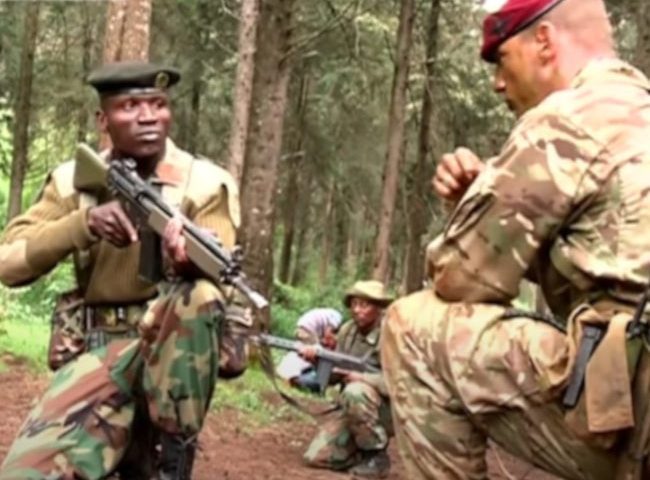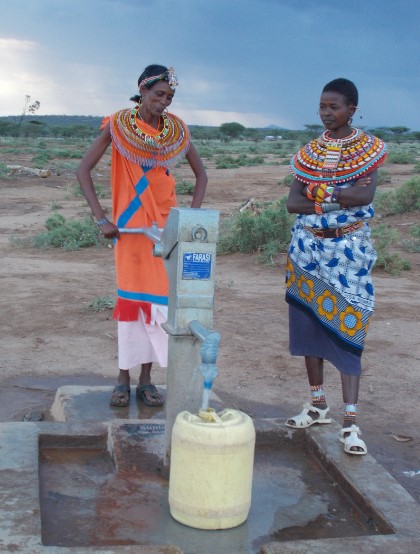By Sena Thoradeniya
N. B. In a time of chaos, confusion, disorder and uncertainty discussing about
Kandyan Chieftains may be interpreted as something akin to engaging in
ecstatic revelry, overlooking current issues. But as a modern myth has been
created, that Kandyan Chiefs subverted” the policies of the British, expressed
their resistance to British colonialism”, we are duty-bound to debunk it and put
the record straight. As Chairman Mao Zedong had said (1957), Undoubtedly
we must criticise wrong ideas of every description. It certainly, would not be
right to refrain from criticism, look on while wrong ideas spread unchecked and
allow them to dominate the field”. We may add at any time!
1. Creation of New Provinces
(a) On the recommendations of the Colebrook Commission of 1833, Board of
Kandyan Commissioners was abolished and by Proclamation of Governor
Horton on October 1, 1833, Northern Province was created and the ancient
Dissavaniya of Nuwara Kalaviya was attached to it. The ancient Tamankaduwa
was attached to the Eastern Province. These were the two cradles of Sri Lankan
civilization and the colonialist’s intention was to erase the historical and cultural
memory of the people of Nuwara Kalaviya and Tamankaduwa and make
them to embrace the Tamil culture, Tamil way of life and customs, in short
Tamilisation of Sinhalayas. More than an administrativemeasure it was
creating a civilizational clash.
There was another reason for breaking ancient Nuwara Kalaviya and
Tamankaduwa and annexing them to Tamil dominated provinces. In June 1820
it was reported that tappal houses at Minneriya and Puliyankadawara had
been burnt by an armed party led by Koswatte Rate Rala. Under a Court
Martial, Kobbekaduwe Rala and Halmillawe Unnanse were executed at
Minneriya in October 1820. British colonialists suspected Nuwara Kalaviya
and Tamankaduwa people as Nuwarawewa Vanni Unnehe was a leader in 1818
freedom struggle. He was arrested, imprisoned, pardoned and reinstated in
office. Tamankaduwe Dissava was executed.
No chieftain of Nuwara Kalaviya, the famous Vanniyars were able to oppose
the merger although there are records of the Nuwarawewa chief, who
was the Vanni Unnehe, practically the Governor of the Vanni, harassing
and extorting the people.
R. W. Ivers in his Manual of the North Central Province (1899) writes: The
transfer of the Kandyan Province of Nuwara Kalaviya to the Northern Tamil
Province caused great dissatisfaction among the people. The headmen many of
whom were in office under the king, especially resented being placed under
officers ignorant of their customs and language.”
By the Proclamation of September 6, 1873, North Central Province was created
from the ancient Kandyan districts of Tamankaduwa, Nuwara Kalaviya and
Demala Hatpattuwa of Sath Korale, North Western Province, the latter was
restored to North Western Province in 1875. The first Government Agent of
North Central Province John F. Dickson wrote in 1873, that these areas for the
last 40 years had formed outlying portions of Tamil provinces and districts”. He
adds that the North Central Province became the most neglected portion of the
Island.
Why the North Central Province was created? For the love of the people of
Nuwara Kalaviya and Tamankaduwa? To bring development? Political cultural
and religious developments taking place in the other parts of the Island,
especially Buddhist and cultural revival were the main reasons.
Well-to-do people of Nuwara Kalaviya sending their sons to Christian schools in
Jaffna continued until the dawn of Independence.
(b) In 1889, January, 4, Ratnapura and Kegalle were detached from the Western Province and formed a separate province as Sabaragamuwa. Some chieftains initially were desirous of being attached to Central Province. RMs Kobbekaduwa and Wattegama stood firmly with colonial decision. The reason was that they did not want to play second fiddle to chiefs in the Central Province regarded as the king makers!
2. Chieftains carried Ordinances, rules, orders to theletter
In Part II we have stated that when the Chieftains acted as assessors at the times of assessing paddy fields to levy Grain Tax, prosecuting defaulters of Grain Tax and Poll Tax, prosecuting villagers for opening up chena cultivation in crown” lands and parents and guardians of children who failed to attend schools and owners of unlicensed dogs, they did not show any mercy to peasants, following colonial Ordinances to the letter.
2.1. Collection of Grain Tax
Some peasants were over taxed. The assessments made were wrong, excessively high. Knowing that the assessment made was excessive the peasants accepted the agreement. Register of Commutation was signed by the owners for the sake of the collateral advantages as securing a record of ownership.
Peasants complained errors, high rates and over estimation of the yield and over valuation of the produce. Year by year yields diminished owing to water scarcity and soil exhaustion. But assessments were carried out on the principal of making a little change as possible. Very little done to rectify the errors and over assessments. Owners of over-assessed fields saw at once that there would not be a profit in continuing to cultivate the fields and therefore abandoned the fields. The peasants had to pay survey fees if they wanted to survey their traditional fields.
Paddy lands were seized to recover tax; put on sale, land sold by public auction, dispossessing the owners. Defaulters had to pay arrears of the tax and tax for the current year. Seizure and sale of household goods and chattels of the unfortunate farmers was a common occurrence although many did not possess any moveable property. Majority of defaulters did not have any other property. Abandonment of cultivation, internal migration, decrease in population were immediate results. Some defaulters were forced to buy back their own fields from the Crown or work as ande cultivators under new owners in their own fields. Wealthy people bought these lands for a song. I have depicted the misery of Kandyan peasants had to undergo due to excessive Grain Tax in my novel Madaran” (2020).
In 1868 a large amount of arrears of Grain Tax was collected in Kandy District, thanks to the efforts of chieftains.
In 1884, Assistant Government Agent of Nuwara Eliya, G. A. Baumgartner wrote: The preparation of lists of irrecoverable items of tax has involved very heavy work and minute inquiries. Some Headmen through carelessness were found to have omitted many items which should have been included.”
Modern theorists can formulate new theories based on this that Headmen favoured the villagers by not assessing the fields correctly (under valuation) and at the time of making entries about the household items owned by the peasants. But it was due to sheer negligence and carelessness.
In 1888 to recover the tax, 306 fields (or 691 amunus and 6 kurunis) were sold in Kandy District of which 158 fields were bought by the Crown. Most of the fields sold had not been cultivated in the year for which tax was due.
Many Assistant Government Agents had reported the efficacy of tax collection by the headmen. Tax was recovered without much difficulty owing to the exertions of the Chief headmen and of the kachcheri Mudaliyar who deserve credit for the energy which they showed with regard to this matter”, wrote Acting Assistant Government Agent of Kegalle, F.H. Price in 1888.
In 1889, Matale Assistant Government Agent S. M. Burrows wrote: the new commutation agreement has been in force during the year. The tax was satisfactorily collected within the year in spite of many difficulties and disputes”.
Matale Assistant Government Agent, G. S. Saxton wrote in 1890, Grain Tax was collected without extraordinary difficulty in all the Korales”.
Paddy commutation – collections for each province and district can be obtained from the records maintained by Government Agents and Assistant Government Agents respectively.
2.2 Poll Tax
In 1884 in Matale District 55 men were prosecuted for neglecting to attend labour, who elected to pay, and fined Rs. 10/= each; 492 who elected to commute and did not pay were arrested and imprisoned for 10 days each; in 1885, 262 men were sent to prison for a month each and 4 men were fined Rs. 10/= each; all reported and prosecuted by Rate Mahattayas.
In prison they were employed in stone breaking, object being to make the work distasteful and induce all to pay who could” wrote Assistant Government Agent H. L. Moysey. For if double the present number of men chose to work it would be impossible to employ them unless the regular gangs of skilled road coolies were discharged” he wrote.
Men were assigned to work on the principal roads, required to break metal.
Number who paid Road Tax at Rs. 1/50 in 1884 and 1886 in Patha Dumbara were 3729 and 3978; in Uda Dumbara 1363 and 1780 respectively.
Collections under Road Ordinance for each year can be obtained through the records of Government Agents and Assistant Government Agents.
Matale Assistant Government Agent G. M. Fowler wrote in 1891, as Tamil estate coolies were exempted from road tax, in some cases Sinhalese labourers had adopted Tamil names in the hope of evading their liability”.
In 1894 Kegalle Assistant Government Agent F. H. Price reported that Walgampotha Arachchi in 1891, achieved what had never previously been attained in the District continued his excellent record.” What he had done exceptionally good” was collection of commutation for all his men liable. The number in his original list was 137 of whom 1 died and 3 were exempted. The remaining 133 had paid at the rate of Rs.1/50 bringing a revenue of Rs. 199/50 to the Government. This is an example of what is possible under the Ordinance with good material”. How the Arachchi collected the poll tax and how the impoverished villager paid Rs. 1/50 were not problems to Price.
2.3. Cocoa Cultivation and Cocoa Propagation
Kandyan villagers were encouraged to take part in cocoa cultivation in Matale District. In 1878 the leading role was played by Dullewa Banda, the President of Village Tribunal of North Matale in this regard.
By 1886, cocoa was a success in Kandy District and North of Matale. If Sinhalese could only be brought to give care to the cultivation of cocoa it would more than supply the place of coffee with them. But natural apathy of the Sinhalese is an objection to the introduction of this plant to be grown round their houses”, wrote the Government Agent of Central Province W.E. T. Sharpe.
In 1887, a pamphlet on cocoa cultivation written by Dickenson of Wariyapola Estate, Matale was translated into Sinhala, printed and distributed with some thousands of cocoa pods in Matale. A prize was given at the next local agricultural show to the most successful cultivator. An inspection of gardens was carried out. Cocoa leaflets were distributed to every Headman and through them to leading villagers in the district. Offer of a reward of Rs. 5/= for anyone who can show 30 cocoa shrubs planted and growing in his garden.
Cocoa stealing increased. Moormen bought the stolen cocoa. The Government introduced the Whipping Ordinance. 20 lashes and rigorous imprisonment to a Moorman was given for buying stolen cocoa in Matale in 1892.
Headmen were deployed to supervise cocoa estates in Matale District in 1902. Fixed beats – daily patrolling of 9 constables was arranged, (between 4 a.m. to 7 a. m.) at major estates at Wariyapola, Suduganga, Aluvihare, Kaludewala, Dikkeeriaya and Hampshire. For other estates headmen were given instructions to patrol under the supervision of Rate Mahattayas.
A Cocoa Commission was appointed to inquire and report whether special legislation was required to prevent thefts of cocoa and in 1903 it finished it’s inquires. Ordinance No. 8 of 1904 was enacted as to the recommendation of Cocoa Commission. The Commission said that ordinary civil law is of little avail and drastic measures were necessary to put down the evil.
Registration of dealers and licensing of dealers in cocoa was subjected to restrictions. No one was permitted to buy cocoa unless he was a dealer. They must have sign boards, weights and scales. Dealers were allowed to buy cocoa only in a licensed premises. They were prohibited to buy cocoa from sunset to sunrise or from children under 12 years of age. Under no circumstances they were not allowed to buy wet cocoa”, that is cocoa in the pod or cocoa beans with pulp. Dealers were obliged to keep books showing the amount bought into their stores and issued therefrom and their premises and records were open for inspection by authorized persons. Buying cocoa from estate coolies was prohibited.
It is interesting to note that in 1920 a chocolate factory at Peradeniya was completed to turn out high grade plain chocolate and chocolate powder from the best quality Ceylon cocoa”. Lady Manning opened the factory in 1921. It was reported that its production was of very high quality” but within a space of a year or two it was closed down.
2.4. Chena Cultivation
In 1895 Rate Mahattayas of North Western Province had commented on encroachment of Crown” land for chena cultivation. For them it was an overstepping reasonable limits and destruction of forests and loss to government.”
T. A. Hodson, Government Agent of Central Province in 1933 wrote chena cultivation as a relic of barbarism”, wasteful form of agriculture”. But it was the only salvation of peasants in the wake of scarcity of land, drought etc.
In North Central Province it was an everlasting battle between the chena cultivators and Headmen and Colonial administrators.
2.5. Forest Produce
In 1890 collection of forest produce, firewood, honey, fence sticks and individual right to pasturage and water was prohibited to the villagers, a right they enjoyed from time immemorial.
2.6. Kandyan Marriages
With the assistance of Chieftains, British administrators took a great effort to implement amendment of Kandyan Marriage Law of 1869. It was made compulsory to register Kandyan marriages by Ordinance No. 4 of 1870.
In 1894 Matale Assistant Government Agent G.S. Saxton wrote refusing chena permits to any Kandyan man whose marriage was not registered.
In 1904 Wace wrote: All the Rate Mahattayas in the Kandy District have reported that an amendment of the Ordinance No.4 of 1870 regulating the registration of Kandyan marriages is desirable to restrict the number of illegal unions and to enforce registration”. But in 1906 Rate Mahattayas reported to the Government Agent that unregistered unions are increasing year by year and difficult to get marriages registered.
Pressure applied by officials to secure registration of Kandyan marriages, wrote N. G. Morgappah, Acting Registrar General in 1919. No doubt this pressure was applied through Kandyan chieftains.
2.7. Carolina Paddy
Propagation of Carolina Paddy” was experimented by Government Agent H. S.O. Russell in 1867 in Kandy District. He distributed small portions of seeds for trial to Rate Mahattayas. He also experimented propagation of imported Manilla paddy” as against our traditional rice varieties. All his experiments became a failure. Rate Mahattayas whose origins go to traditional Kandyan villages and who owned a large amount of paddy lands sown with traditional rice varieties blindly followed the dictates of the Government Agent knowing that they are not suitable to our climatic and soil conditions and cannot induce the farmers to change over to exotic varieties.
2.8.Registration of Dogs
Registration of village dogs was made compulsory by the Colonial administrators using Headmen. In 1914 in Central Province alone 11,485 dogs were registered. In 1920 in Central Province 312 persons were prosecuted for not obtaining dog licenses. Increase is probably due to greater effort on the part of minor headmen” wrote W. L. Kindersley Government Agent of Central Province. In 1923, 220 were fined for not obtaining licenses.
The registration of dogs in rural areas was stopped in 1926 as it was difficult to trace the owners of dogs. Coupled with registration of dogs British administrators began to shoot stray” dogs. In 1923, 1568 dogs in the Central Province were killed. In 1926, 2543 dogs were shot dead. Figures for dogs killed in 3 years from 1931 are as follow: 1931-7805; 1932-9613; 1933- 10126.
In our traditional villages dogs belonged to the whole village. Dogs were not a part of private property. They roamed all over the village and fed by all villagers.
2.9. School Fines
Parents and guardians were fined for not sending the school going children to schools established in remote villages. In 1923 in Central Province Rs. 4193/95 was collected as fines. Koralas were appointed as Attendance Officers to check school attendance and absentees. For example, in 1926 L. B. Dodanwela Korala was appointed as Attendance Officer for the town of Kegalle.
2.10. Food Control work
According to the Report of R. N. Thaines, Acting Principal Collector of Customs, during the first 4 years of war (First World War) Ceylon imported over ¾ of foodstuffs required for its population. By the end of 1918 all rice imports from South India had been prohibited and Ceylon was dependent on Rangoon and Calcutta for its supply. At the beginning of 1919 Indian Government informed Ceylon that the exports from India would be curtailed to 140,000 tons for the first 9 months of the year of which 30,000 tons was allowed to be earmarked for the use of estate labourers and other Indian residents in Ceylon. (see the divide and rule policy even in rice distribution). As the stock of rice at any one time in the Island never exceeded 2 months’ supply, a system of food control and rationing of supplies had to be inaugurated at once. Appointment of a Food Controller, drawing up a scheme for the control of rice between the Customs and the granaries for its issue were associated with food control work.
Scarcity of rice led to the demand for other grains. But it was difficult to obtain as the Indian government prohibited export of all other grains.
Import of wheat flour was restricted, mainly from Bombay, to 500 tons per month since 1918. Before the rice crisis the consumption of bread was confined to mainly the richer classes and this supply proved sufficient. As the scarcity of rice became pronounced prices rose and the laboring classes began to turn to flour products as a substitute. The price of flour had to be controlled and in July 1919 a flour famine” was approaching.
In the latter half of 1918 chilies, potatoes and onion were restricted and could be obtained only under a rationing system. Sugar prices fluctuated, mainly brought from Java.
In June it was difficult to obtain rice at any price. Prices of all grades of rice were in the increase. There was unrest among the local population especially in Colombo. To prevent food riots and looting armed police guards were stationed at the Customs, wharf warehouses, Charmers’ Granary and Manning Market. Carts and lorries transporting rice to railway stations were escorted with armed police.
In early June control prices for rice was fixed. Rice was sent to districts from the Office of the Food Controller. A depot was opened in Kandy. Distribution centers were established for rice distribution in Wattegama and Katugastota in Dumbara. Wattegama distribution was handled by A. E. W. Holloway (Hollo Mahattaya to people) the biggest tea and rubber planter in Wattegama area). Permits were issued to retail dealers, eating houses and hotels, schools and colleges to obtain their supplies from wholesale dealers on payment at the controlled price. Coupons issued, rationing 2 cut measures per head per week. As Yala crop exhausted there was a high demand for imported rice. Complaints about dealers were in abundance alleging that they favoured their friends.
Rationing of rice continued until JRJ abolished it in 1977. Rice was a major issue at elections. Increasing the price of rice to 70 cents from 25 cents per measure was a cause for Hartal in 1953. Prime Minister Dudley Senanayke resigned. Later in 1965 he gave 1 measure of rice free, charging for the second measure. Handen haal” (rice will be brought from moon”) became a slogan at 1970 election campaign of the tri-party Coalition. In 1970 Sirimavo restored the rice ration to two measures. Restriction of rice transport and other measures taken by her government had a devastating effect to her government in 1977 General Elections.
2.11. Poppy Day Collections
Since the end of the First World War in 1919, Remembrance Day or Poppy Day was observed even in village schools, Headmen taking the lead. An artificial flower was sold and the money was collected by the Headmen as instructed by British administrators.
2.12. Other Strictly Imposed Rules
Restriction of carrying knives especially in the arecanut plucking season to reduce crime, enforcing the Knife Ordinance, prohibition of tapping kittul trees for making toddy and raiding illicit toddy, prohibition of shooting between sunset and sunrise except perhaps upon a heavy license fee, (this was not applicable to White hunters), checking carts, boats for dried bush meat and prosecuting the offenders, prosecuting for felling trees in Crown” lands, levying fines for not clearing the thisbambe” (the portion of land bordering a village or land between the weva and paddy fields with a width of 30 bamba” in Nuwara Kalaviya), charging villagers who neglect cattle branding and those who did not follow the stipulated procedures in the burial of carcasses of cattle died of rinderpest, impounding of cattle trespassing into plantations were the other measures taken by the British Government strictly enforced through the Headman system.
Postscript: Any theoretician now can say that as office holders they were
bound to carry out orders of the Colonial Government. Yes. But theorising that
they subverted” the policies of the British, expressed their resistance to
British colonialism”, opposed British colonialism in a subtle way is bad.
Wace reports in 1888, on his tour of Balangoda area, to Behimaliyadda through Yatimalkaduwa nindagama shared by Mahawelatenna and Maduwanwela that they have not paid taxes for the property they own ( defying Britishers!).
END OF PART 1V

:quality(70)/cloudfront-eu-central-1.images.arcpublishing.com/thenational/AKWGJ4NBOEXEHJHJJ4MAYEF5YA.jpg)




